At around 94 feet high, the antennas of the Very Large Array in central New Mexico appear to dwarf their Control Building. Part of the visitors’ walking tour is visible in the foreground.
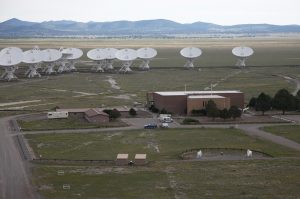
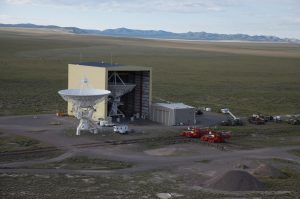
The VLA Barn and its Transporters
In this aerial view taken at the Very Large Array, the Antenna Assembly Building (known as The Barn) is occupied with the 28th (spare) antenna. Another antenna sits on the Master Pad, the testing station just outside the Barn. Both of the orange Antenna Transporters are parked outside.
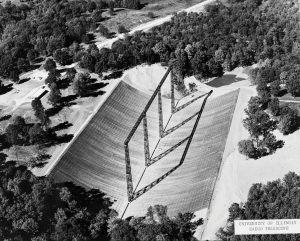
University of Illinois 400ft Antenna
The University of Illinois radio telescope compiled a catalog of faint extragalactic radio sources. It was a 400 x 600 foot cylindrical parabolic reflector made by covering a shaped-earth excavation with asphalt and wire screen. A catwalk at 155 feet above the ground supported about 400 conical log-spiral antennas along the focal line. Scanning in one plane was achieved by the Earth’s rotation; in the other plane by physically rotating the circularly polarized spirals.
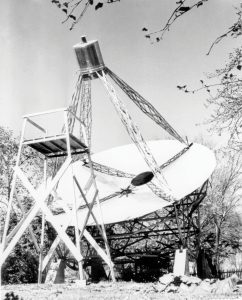
Grote Reber’s First Radio Telescope
In a side yard of his mother’s house in Wheaton, Illinois, a 26-year old engineer named Grote Reber built the first dish antenna radio telescope in 1937. He used wooden rafters, galvanized sheet metal, and spare parts from a Ford Model T truck. With this 31-foot diameter telescope, Reber mapped the radio structure of our Galaxy, discovered bright sources of radio waves outside our Galaxy, and made the observations that would later help physicists discover non-thermal radiation.
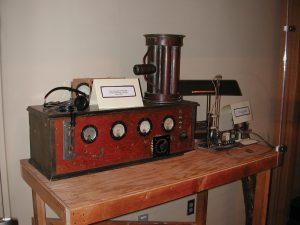
Grote Reber’s Receiver Exhibit
On exhibit in the Green Bank Science Center in West Virginia is the original receiver equipment used by radio astronomy pioneer Grote Reber. With this, he discovered sources of radio waves coming from outside our Galaxy, mapped our Galaxy’s radio wave structure, and also made the observations that would later help physicists discover non-thermal synchrotron radiation.
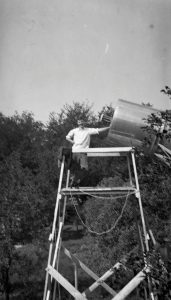
Receiver Swap at Grote Reber’s First Telescope
A 26-year old Grote Reber stands on the receiver tower used to maintain and swap receivers on his homemade radio telescope in Wheaton, Illinois. He is leaning against the resonating-cavity drum of this large telescope that he built in 1937.

